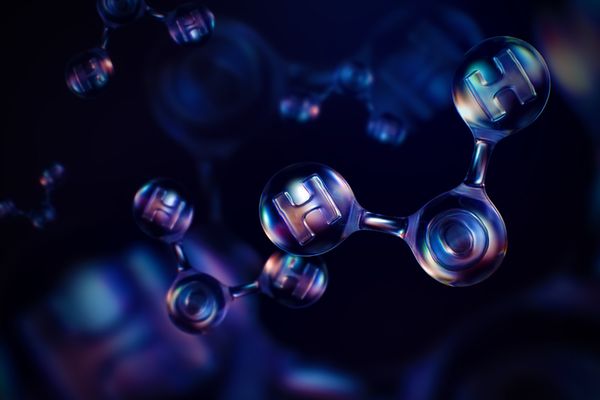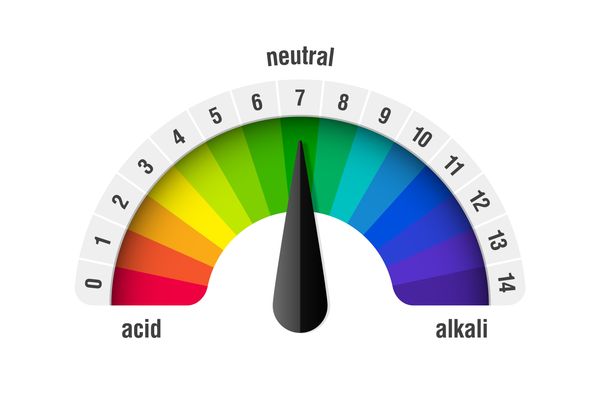1.2.9
Alkaline Earth Metals
Properties of Group 2 Metals
Properties of Group 2 Metals
Elements in the same group have similar properties. Here, we shall look at the similarities between the properties of the Group 2 elements.
-min,h_400,q_80,w_640.jpg)
-min,h_400,q_80,w_640.jpg)
Atomic radius and ionisation energy
Atomic radius and ionisation energy
- Atomic radius increases as you go down Group 2.
- This is because each extra electron shell is further away.
- Ionisation energy decreases as you go down Group 2.
- This is because the outer electrons are further away and experience less attraction to the nucleus.


Melting point
Melting point
- Melting points decrease as you go down Group 2.
- This is because the ion cores have larger radii down the group.
- The free electrons experience less attraction to the nuclei because of the larger radii.
- The bonding is weaker, so the melting point is lower.
- Magnesium has an anomalously low melting point.
- This is because it has a different crystal structure to the rest of Group 2.


Reactions with water
Reactions with water
- Group 2 metals react with water to form metal hydroxides. For example:
- Mg + 2H2O → Mg(OH)2 + H2
- Reactivity increases as you go down Group 2. This is because the lower elements have lower ionisation energies.
- Beryllium is an exception. If beryllium were to lose two electrons it would be tiny and have a very high charge density. This would make it unstable and so beryllium doesn't react with water.


Solubility of salts
Solubility of salts
- The solubility of hydroxides increases as you go down Group 2.
- Magnesium hydroxide is very insoluble. The phrase to use for this is 'sparingly soluble'.
- The solubility of sulfates decreases as you go down Group 2.
- Barium sulfate is completely insoluble.
Uses of Group 2 Compounds
Uses of Group 2 Compounds
Group 2 compounds have a number of uses in industry and society. Examples of these uses include:


Titanium extraction
Titanium extraction
- The first step in the extraction process is converting titanium ore (TiO2) to titanium chloride (TiCl4) using chlorine gas and carbon.
- The second step involves heating TiCl4 with magnesium metal at 1,000oC. The equation for this step is:
- TiCl4(g) + 2Mg(l) Ti(s) + 2MgCl2(l)


As bases to neutralise acids
As bases to neutralise acids
- Calcium hydroxide (sometimes called slaked lime) and magnesium hydroxide are used to neutralise acids.
- Calcium hydroxide is used to neutralise acidic soils in agriculture.
- Magnesium hydroxide is used in indigestion tablets as an antacid that neutralises excess stomach acid.


In healthcare
In healthcare
- 'Barium meals' (made of barium sulfate) are used in healthcare.
- X-rays can detect solid materials like bones but aren't very good at detecting soft tissues.
- 'Barium meals' are insoluble and reflect X-rays.
- A barium meal coats the oesophagus, stomach, and intestines and makes the structure of them show up on X-rays.


Wet scrubbing
Wet scrubbing
- Wet scrubbing is the process of removing SO2 from flue gases.
- Flue gases come from chimneys and industrial waste.
- CaO and CaCO3 are used to remove the SO2 from the gases.
- This works because SO2 is acidic and the calcium compounds are bases.
- The CaO is mixed with water and sprayed onto the gases.
- The byproduct is calcium sulfite, CaSO3.
1Principles of Science I
1.1Structure & Bonding
1.1.1Atomic Model
1.1.2Electron Shells, Sub-Shells & Orbitals
1.1.3Ionic Bonding
1.1.4Representing Ionic Bonds
1.1.5Covalent Bonding
1.1.6Representing Covalent Bonds
1.1.7Metallic Bonding
1.1.8Intermolecular Forces
1.1.9Intermolecular Forces 2
1.1.10End of Topic Test - Bonding
1.1.11Relative Masses
1.1.12The Mole
1.1.13Molar Calculations
1.1.14Molar Calculations 2
1.1.15Empirical & Molecular Formulae
1.1.16Balanced Equations
1.1.17Percentage Yield
1.1.18End of Topic Test - Amount of Substance
1.2Properties of Substances
1.2.1The Periodic Table
1.2.2Ionisation Energy
1.2.3Factors Affecting Ionisation Energies
1.2.4Trends of Ionisation
1.2.5Trends in the Periodic Table
1.2.6Polarity
1.2.7Metals & Non-Metals
1.2.8Alkali Metals
1.2.9Alkaline Earth Metals
1.2.10Reactivity of Alkaline Earth Metals
1.2.11Redox
1.2.12Transition Metals
1.2.13Redox Reactions of Transition Metals
1.3Cell Structure & Function
1.4Cell Specialisation
1.5Tissue Structure & Function
1.5.1Human Gas Exchange
1.5.2Blood Vessels
1.5.3Atherosclerosis
1.5.4Skeletal Muscle
1.5.5Slow & Fast Twitch Fibres
1.5.6Neurones
1.5.7Speed of Transmission
1.5.8Action Potentials
1.5.9End of Topic Test - Neurones & Action Potentials
1.5.10Synapses
1.5.11Types of Synapse
1.5.12Medical Application
1.5.13End of Topic Test - Synapses
1.5.14Chemical Brain Imbalances
1.5.15Effect of Drugs on the Brain
1.6Working with Waves
1.7Waves in Communication
2Practical Scientific Procedures and Techniques
3Science Investigation Skills
3.1Scientific Processes
3.2Data Handling & Analysis
3.3Enzymes in Action
3.4Diffusion
3.5Plants & Their Environment
3.6Energy Content in Fuels
4Principles of Science II
4.1Extracting Elements
4.2Relating Properties to use of Substances
4.3Organic Chemistry
4.4Energy Changes in Industry
4.5The Circulatory System
4.5.1The Circulatory System
4.5.2Blood Vessels
4.5.3Blood Transfusion & the ABO Rhesus System
4.5.4The Heart
4.5.5The Cardiac Cycle
4.5.6Cardiac Output
4.5.7Coordination of Heart Action
4.5.8Heart Dissection
4.5.9Controlling Heart Rate
4.5.10Electrocardiograms
4.5.11Cardiovascular Disease
4.5.12Investigating Heart Rates
4.6Ventilation & Gas Exchange
4.7Urinary System
4.9Thermal Physics
4.9.1Power & Efficiency
4.9.2Work & Energy
4.9.3Conservation of Energy
4.9.4Pressure
4.9.5First Law of Thermodynamics
4.9.6Second Law of Thermodynamics
4.9.7Heat Engines, Heat Pumps & Refrigerators
4.9.8Non-Flow Processes
4.9.9p-V Diagrams
4.9.10Ideal Gases
4.9.11Ideal Gases 2
4.9.12Thermal Energy Transfer
4.9.13Thermal Energy Transfer Experiments
4.10Materials
5Contemporary Issues in Science
5.1Contemporary Issues in Science
5.2Analysing Scientific Information
Jump to other topics
1Principles of Science I
1.1Structure & Bonding
1.1.1Atomic Model
1.1.2Electron Shells, Sub-Shells & Orbitals
1.1.3Ionic Bonding
1.1.4Representing Ionic Bonds
1.1.5Covalent Bonding
1.1.6Representing Covalent Bonds
1.1.7Metallic Bonding
1.1.8Intermolecular Forces
1.1.9Intermolecular Forces 2
1.1.10End of Topic Test - Bonding
1.1.11Relative Masses
1.1.12The Mole
1.1.13Molar Calculations
1.1.14Molar Calculations 2
1.1.15Empirical & Molecular Formulae
1.1.16Balanced Equations
1.1.17Percentage Yield
1.1.18End of Topic Test - Amount of Substance
1.2Properties of Substances
1.2.1The Periodic Table
1.2.2Ionisation Energy
1.2.3Factors Affecting Ionisation Energies
1.2.4Trends of Ionisation
1.2.5Trends in the Periodic Table
1.2.6Polarity
1.2.7Metals & Non-Metals
1.2.8Alkali Metals
1.2.9Alkaline Earth Metals
1.2.10Reactivity of Alkaline Earth Metals
1.2.11Redox
1.2.12Transition Metals
1.2.13Redox Reactions of Transition Metals
1.3Cell Structure & Function
1.4Cell Specialisation
1.5Tissue Structure & Function
1.5.1Human Gas Exchange
1.5.2Blood Vessels
1.5.3Atherosclerosis
1.5.4Skeletal Muscle
1.5.5Slow & Fast Twitch Fibres
1.5.6Neurones
1.5.7Speed of Transmission
1.5.8Action Potentials
1.5.9End of Topic Test - Neurones & Action Potentials
1.5.10Synapses
1.5.11Types of Synapse
1.5.12Medical Application
1.5.13End of Topic Test - Synapses
1.5.14Chemical Brain Imbalances
1.5.15Effect of Drugs on the Brain
1.6Working with Waves
1.7Waves in Communication
2Practical Scientific Procedures and Techniques
3Science Investigation Skills
3.1Scientific Processes
3.2Data Handling & Analysis
3.3Enzymes in Action
3.4Diffusion
3.5Plants & Their Environment
3.6Energy Content in Fuels
4Principles of Science II
4.1Extracting Elements
4.2Relating Properties to use of Substances
4.3Organic Chemistry
4.4Energy Changes in Industry
4.5The Circulatory System
4.5.1The Circulatory System
4.5.2Blood Vessels
4.5.3Blood Transfusion & the ABO Rhesus System
4.5.4The Heart
4.5.5The Cardiac Cycle
4.5.6Cardiac Output
4.5.7Coordination of Heart Action
4.5.8Heart Dissection
4.5.9Controlling Heart Rate
4.5.10Electrocardiograms
4.5.11Cardiovascular Disease
4.5.12Investigating Heart Rates
4.6Ventilation & Gas Exchange
4.7Urinary System
4.9Thermal Physics
4.9.1Power & Efficiency
4.9.2Work & Energy
4.9.3Conservation of Energy
4.9.4Pressure
4.9.5First Law of Thermodynamics
4.9.6Second Law of Thermodynamics
4.9.7Heat Engines, Heat Pumps & Refrigerators
4.9.8Non-Flow Processes
4.9.9p-V Diagrams
4.9.10Ideal Gases
4.9.11Ideal Gases 2
4.9.12Thermal Energy Transfer
4.9.13Thermal Energy Transfer Experiments
4.10Materials
5Contemporary Issues in Science
5.1Contemporary Issues in Science
5.2Analysing Scientific Information
Unlock your full potential with Seneca Premium
Unlimited access to 10,000+ open-ended exam questions
Mini-mock exams based on your study history
Unlock 800+ premium courses & e-books